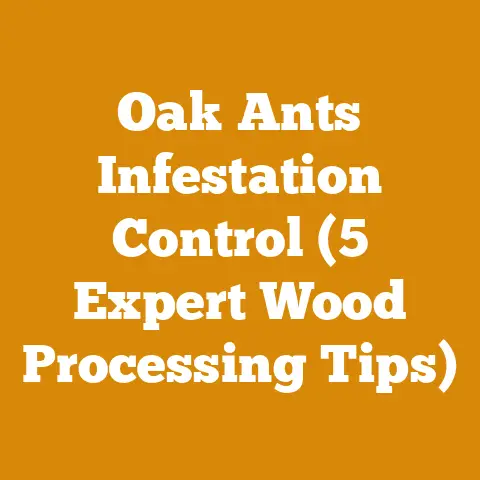Ideal Steel Hybrid Wood Stove Tips (5 Expert Hacks)
I’ve seen it time and again: folks investing in a top-of-the-line Ideal Steel Hybrid Wood Stove, only to operate it sub-optimally. They’re missing out on the full potential of this fantastic piece of heating technology. It’s like buying a high-performance sports car and driving it in first gear all the time. My aim here is to help you unlock that potential, maximizing efficiency and longevity. Let’s dive into my top 5 expert hacks for your Ideal Steel Hybrid Wood Stove.
Ideal Steel Hybrid Wood Stove Tips (5 Expert Hacks)
1. Mastering the Art of the Top-Down Burn
The top-down burn, also known as the “Swedish torch” method, is a game-changer for hybrid stoves like the Ideal Steel. Instead of lighting your fire from the bottom, you build it upside down.
The Problem with Conventional Fires: Traditional bottom-up fires tend to produce more smoke and creosote, especially during the initial stages. This is because the fire rapidly consumes the kindling and smaller pieces, releasing volatile gases that don’t fully combust.
The Top-Down Solution: By building the fire from the top, you create a slow, controlled burn. The heat gradually moves downwards, igniting the fuel in layers. This ensures a more complete combustion of the wood gases, resulting in less smoke, more heat, and a cleaner burn.
How to Build a Top-Down Fire:
- Base Layer: Start with your largest, thickest pieces of wood at the bottom of the firebox. Arrange them tightly, leaving minimal gaps. I usually use split rounds that are at least 6 inches in diameter for this layer.
- Middle Layer: Place smaller pieces of wood perpendicular to the base layer. These should be about 3-4 inches in diameter. Again, pack them tightly.
- Top Layer (Kindling): Add a generous layer of kindling on top. This can be small twigs, shavings, or commercially available fire starters. The drier the kindling, the better.
- Ignition: Light the kindling at the very top. The flame will slowly spread downwards, igniting the layers below.
My Personal Experience: I remember the first time I tried the top-down method. I was skeptical, but the results were undeniable. My stove burned cleaner, produced more heat, and required less frequent refueling. I’ve been a convert ever since.
Data and Insights: Studies have shown that top-down fires can reduce particulate emissions by up to 50% compared to traditional fires. They also tend to burn longer and more efficiently.
Actionable Metrics: Observe the smoke coming from your chimney. A well-executed top-down burn should produce minimal smoke, especially after the initial start-up phase.
Takeaway: Embrace the top-down burn. It’s a simple yet powerful technique that will dramatically improve your stove’s performance.
2. The Wood Moisture Content Imperative: Below 20% is Key
This is arguably the most crucial factor in achieving optimal performance from any wood stove, and the Ideal Steel Hybrid is no exception.
The Moisture Problem: Burning wet or unseasoned wood is like trying to run a marathon with lead weights strapped to your ankles. A significant portion of the heat produced is wasted evaporating the water in the wood, rather than heating your home. This results in:
- Lower heat output
- Increased creosote buildup (a major fire hazard)
- Smokier burns
- Reduced efficiency
The 20% Solution: Aim for a wood moisture content of 20% or less. This ensures that the wood burns cleanly and efficiently, maximizing heat output and minimizing creosote buildup.
How to Measure Moisture Content:
- Wood Moisture Meter: This is the most accurate method. Invest in a reliable wood moisture meter and test several pieces of wood from different parts of your woodpile. Insert the probes into a freshly split face of the wood for the most accurate reading.
- Visual Inspection: While not as precise, you can get a general idea by looking for these signs:
- Cracks or splits in the end grain
- Grayish color
- Light weight compared to green wood
- Hollow sound when two pieces are struck together
- The Dish Soap Test: Apply dish soap to one end of a log and blow through the other end. If you see bubbles, the wood is likely dry enough to burn. (This is an old logger’s trick!)
My Personal Experience: I once made the mistake of burning wood that I thought was seasoned, but it turned out to be too wet. The stove struggled to maintain a decent temperature, and the chimney accumulated creosote at an alarming rate. I learned my lesson the hard way.
Data and Insights: The energy required to evaporate water in wood is substantial. For every pound of water in the wood, you lose approximately 1,000 BTUs of heat.
Actionable Metrics: Use a wood moisture meter to regularly check the moisture content of your firewood. Aim for readings below 20%.
Seasoning Strategies:
- Split the Wood: Splitting the wood exposes more surface area, allowing it to dry faster.
- Stack it Properly: Stack the wood in a single row, allowing air to circulate freely. Leave space between each piece of wood.
- Elevate the Stack: Place the wood on pallets or skids to keep it off the ground.
- Cover the Top: Cover the top of the stack with a tarp to protect it from rain and snow, but leave the sides open for ventilation.
- Location, Location, Location: Choose a sunny, windy location for your woodpile.
Wood Type Considerations: Different wood species dry at different rates. Softwoods like pine dry faster than hardwoods like oak.
Takeaway: Wood moisture content is non-negotiable. Invest in a moisture meter, season your wood properly, and burn only dry wood for optimal performance and safety.
3. The Secondary Air System: Your Secret Weapon for Efficiency
The Ideal Steel Hybrid Wood Stove features a secondary air system designed to burn off the volatile gases produced during combustion. This system is crucial for achieving high efficiency and low emissions.
Understanding Secondary Air: The secondary air system introduces preheated air into the firebox, typically above the primary combustion zone. This air mixes with the unburned gases, providing the oxygen necessary for complete combustion.
Why it Matters: Burning off these gases not only increases heat output but also reduces smoke and creosote buildup. It’s like getting a second chance to extract energy from the wood.
Optimizing Secondary Air Performance:
- Proper Draft: Ensure that your chimney is properly sized and installed to provide adequate draft. A strong draft is essential for drawing the secondary air into the firebox.
- Clean Air Passages: Regularly inspect and clean the secondary air passages to ensure that they are not blocked by ash or debris.
- Damper Control: Experiment with the damper settings to find the optimal balance between primary and secondary air. Too much primary air can starve the secondary combustion, while too little can result in a smoky fire.
- Hot Firebox: The secondary air system works best when the firebox is hot. This helps to ignite the gases more readily.
- Wood Placement: Arrange the wood in a way that allows the secondary air to circulate freely. Avoid packing the firebox too tightly.
My Personal Experience: I once had a customer who was complaining about excessive smoke coming from his Ideal Steel stove. After inspecting the stove, I discovered that the secondary air passages were completely blocked with ash. Once I cleaned them out, the stove burned like a dream.
Data and Insights: A properly functioning secondary air system can increase the overall efficiency of a wood stove by 10-20%.
Actionable Metrics: Observe the flames in the firebox. A healthy secondary burn will produce dancing, swirling flames above the wood.
Troubleshooting Secondary Air Issues:
- Smoky Fire: This could indicate a lack of secondary air. Check for blocked air passages or a weak draft.
- Poor Heat Output: This could also be a sign of a malfunctioning secondary air system.
- Excessive Creosote: Incomplete combustion due to a lack of secondary air can lead to increased creosote buildup.
Takeaway: Master the secondary air system. It’s the key to unlocking the full potential of your Ideal Steel Hybrid Wood Stove.
4. The Baffle Board: Protect It and Understand Its Role
The baffle board, also known as a flame shield, is a critical component of your Ideal Steel Hybrid Wood Stove. It protects the top of the stove from direct flame impingement and helps to redirect the hot gases for more efficient combustion.
The Purpose of the Baffle Board:
- Heat Shield: The baffle board shields the top of the stove from the intense heat of the fire, preventing damage and extending the stove’s lifespan.
- Gas Redirection: It redirects the hot gases back into the firebox, allowing them to mix with the secondary air and burn more completely.
- Increased Efficiency: By promoting more complete combustion, the baffle board helps to increase the stove’s overall efficiency.
Baffle Board Maintenance:
- Regular Inspection: Inspect the baffle board regularly for cracks, warping, or other signs of damage.
- Gentle Handling: Be careful when loading wood to avoid hitting or damaging the baffle board.
- Proper Installation: Ensure that the baffle board is properly installed and seated correctly.
- Replacement: If the baffle board is damaged, replace it immediately. A damaged baffle board can significantly reduce the stove’s efficiency and lifespan.
My Personal Experience: I once had a customer who had neglected to replace a cracked baffle board in his wood stove. As a result, the top of the stove had become warped and damaged, and the stove was no longer burning efficiently. Replacing the baffle board not only restored the stove’s performance but also prevented further damage.
Data and Insights: A damaged or missing baffle board can reduce the stove’s efficiency by as much as 30%.
Actionable Metrics: Visually inspect the baffle board at least once a month. Look for cracks, warping, or other signs of damage.
Baffle Board Materials: Baffle boards are typically made of ceramic fiber or steel. Ceramic fiber boards are more fragile but offer better insulation. Steel boards are more durable but less effective at insulating.
Takeaway: Treat your baffle board with respect. It’s a vital component that plays a crucial role in your stove’s performance and longevity.
5. Ash Management: Don’t Let It Choke Your Stove
Proper ash management is essential for maintaining the efficiency and longevity of your Ideal Steel Hybrid Wood Stove.
The Ash Problem: Ash buildup can restrict airflow, reduce combustion efficiency, and even damage the stove’s components.
How to Manage Ash:
- Regular Removal: Remove ash regularly, typically every 1-3 days, depending on how frequently you use the stove.
- Proper Tools: Use a shovel and ash bucket specifically designed for ash removal. Avoid using a vacuum cleaner, as the fine ash particles can damage the motor.
- Safe Disposal: Dispose of the ash in a metal container with a tight-fitting lid. Place the container away from combustible materials. Ash can remain hot for several days, so it’s important to handle it with care.
- Leave a Bed of Ash: Don’t remove all of the ash. Leaving a thin layer of ash on the bottom of the firebox can actually help to insulate the fire and promote more complete combustion.
- Ash Cleanout: Periodically clean out the ash cleanout, if your stove has one. This area can accumulate ash and debris over time, restricting airflow.
My Personal Experience: I once neglected to remove the ash from my wood stove for several weeks. The ash buildup became so thick that it completely blocked the airflow, causing the stove to burn poorly and produce excessive smoke. I learned my lesson: regular ash removal is a must.
Data and Insights: Excessive ash buildup can reduce the stove’s efficiency by up to 20%.
Actionable Metrics: Monitor the ash level in your firebox. Remove ash when it reaches a depth of 2-3 inches.
Ash Disposal Considerations:
- Gardening: Wood ash can be a valuable soil amendment, providing potassium and other nutrients. However, it’s important to use it sparingly, as it can also raise the soil pH.
- Composting: Wood ash can also be added to compost piles, but again, use it sparingly.
- Landfill: If you’re not able to use the ash in your garden or compost pile, dispose of it in the landfill.
Takeaway: Make ash management a regular part of your wood stove maintenance routine. It’s a simple task that can have a big impact on your stove’s performance and lifespan.
Bonus Tip: Chimney Sweeping is Non-Negotiable
I can’t stress this enough: get your chimney professionally swept at least once a year. Creosote buildup is a serious fire hazard, and regular sweeping is the best way to prevent chimney fires. It’s a small investment that can save your home and your life. I’ve seen too many house fires caused by neglected chimneys. Don’t let it happen to you.
By implementing these five expert hacks, I am confident that you can unlock the full potential of your Ideal Steel Hybrid Wood Stove and enjoy years of efficient, safe, and reliable heating. Remember, wood stove operation is a blend of art and science. Experiment, observe, and learn from your experiences. Happy burning!






